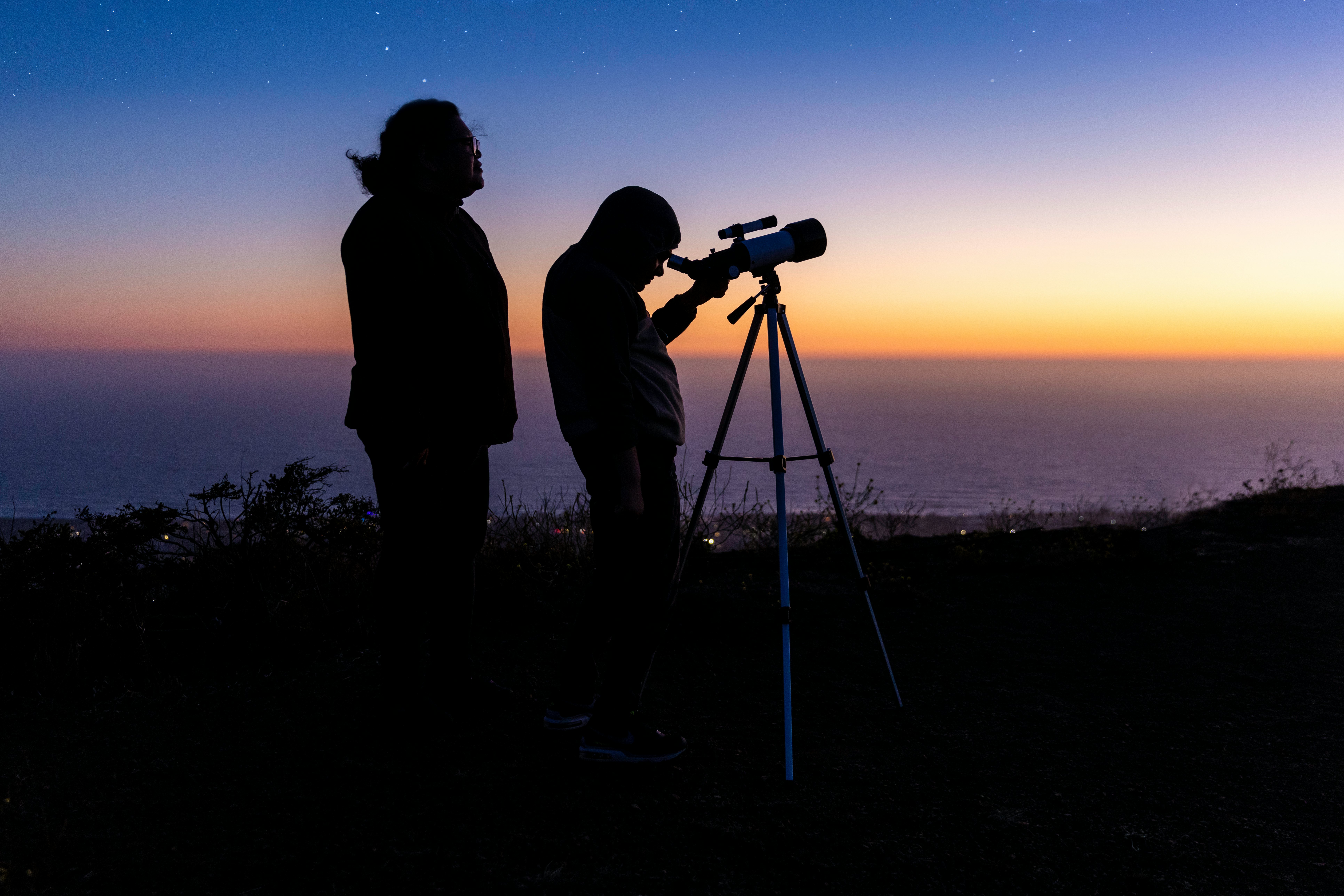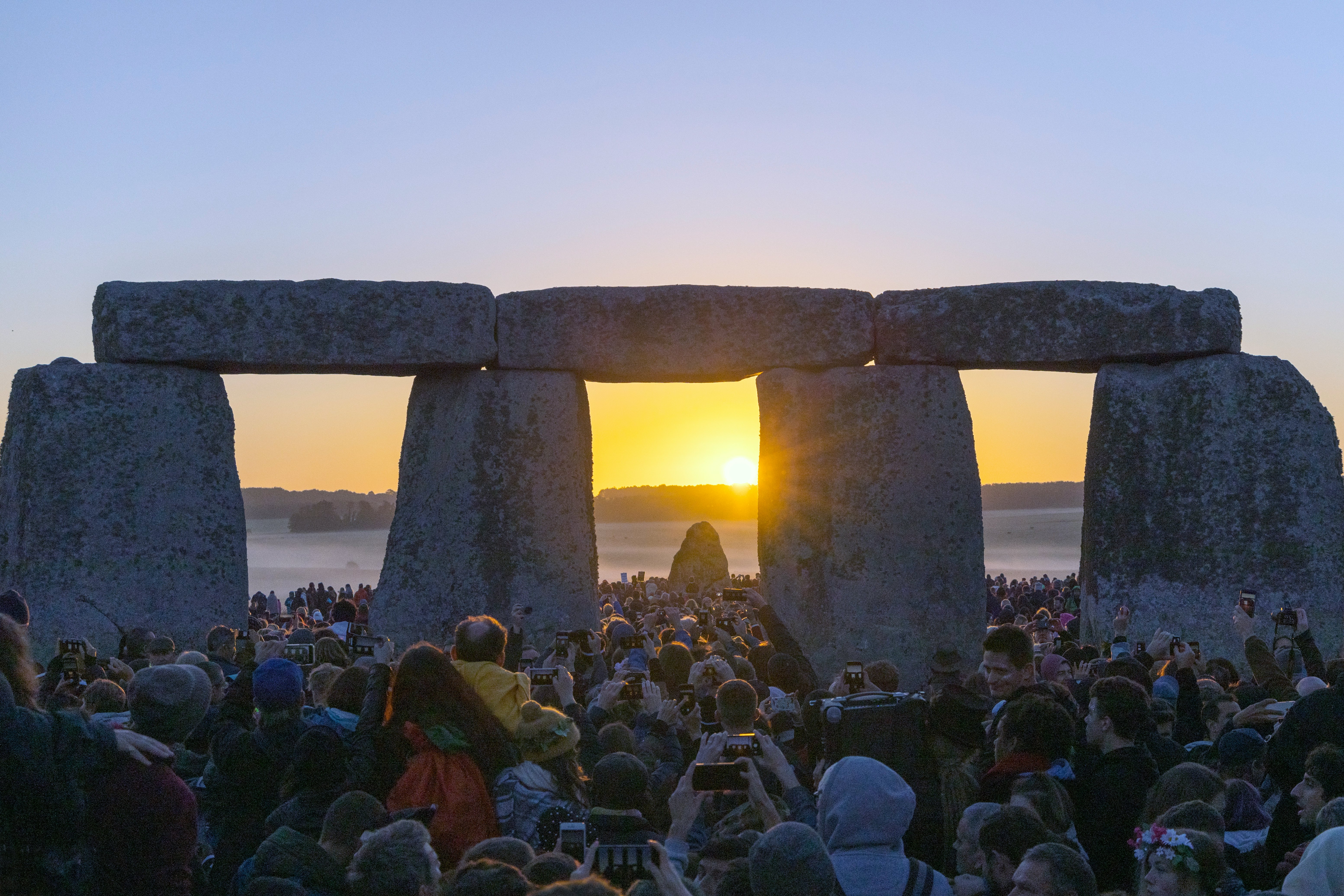
As the planets orbit the Sun, sometimes their paths happen to line up for a moment, allowing us to see a whole row of our cosmic neighbors in the night sky at the same time. Anyone willing to stay up very late Friday night (or get up very early Saturday morning) can see five planets stretched in a diagonal across the eastern sky: Mercury, Uranus, Jupiter, Neptune, and Saturn.
The pre-dawn planetary lineup makes a great way to bid farewell to spring since the June solstice marks the official beginning of summer on Wednesday morning.
How to See The Planetary Conjunction
About an hour before sunrise, look low on the eastern horizon, just to the right of the Moon. If you’re lucky and sharp-eyed, you might be able to spot a dim, pale, red dot in the pre-dawn sky; that’s Mercury, the last of the five planets to rotate into view. Look up and to your right from Mercury to see dim white Uranus, bright yellow Jupiter, pale dim Neptune, and bright yellow Saturn.
If you don’t want to stay up late or get up early to see the whole five-planet lineup, you can catch at least part of the show earlier in the night. Jupiter and Saturn are likely to be the two brightest planets on display, and you shouldn’t have much trouble spotting them with the unaided eye.
You’ll probably need a telescope or a really good set of binoculars to find Uranus and Neptune, which are a couple of billion miles away and therefore a bit less bright than the gas giants. (Jupiter and Saturn, in contrast, are about 500 million and about 875 million miles away, respectively. These planets may appear close in the night sky, but contemplating the vast distances between them is a big part of what makes this conjunction so cool.)
Mercury is only about a hundred million miles away, but it’s a small, rocky planet that doesn’t reflect as much sunlight as the two gas giants; it may also be hard to spot against the slowly brightening early morning sky. You can improve your chances by finding the darkest area possible, with a high vantage point and a good view of the eastern horizon.
Sometimes weather doesn’t cooperate with skygazing, and that’s not the end of the world (yet). The planets will still be fairly close together in the night sky for a few more days as their orbits gradually break up the alignment. And you’ll have another chance to see planets all in a row next month, when Mercury, Venus, and Mars line up in the western sky on the night of July 19.

What is the Summer Solstice?
Earth’s axis is tilted by about 23.4 degrees, so our planet wobbles a bit as it orbits the Sun. Twice a year, that wobbling points one end of Earth’s axis right at the Sun: the North Pole in June, and the South Pole in December. These two days are called the Solstices.
During the Summer Solstice, the Sun appears at its highest point in the northern sky. For everyone in the Northern Hemisphere, this year’s Summer Solstice will happen around midmorning on Wednesday, June 21. Meanwhile, in the Southern Hemisphere, June 21 marks the Winter Solstice: the day when the Sun reaches its lowest point in the sky because the South Pole is pointed away from the Sun.
As a fun side note, this axial tilt explains why the poles get several months of near-constant daylight around the Summer Solstice and several months of near-constant darkness in the winter months.
Are the Solstice and the Planetary Conjunction Related?
There’s not actually much to see on the Solstice, unless you’re at a site like Stonehenge in England or the Maya temple of Tulum in Mexico. But a few days before this year’s Summer Solstice, five planets will line up in the late-night sky. The conjunction doesn’t have anything to do with the Solstice; it’s just a happy coincidence.







